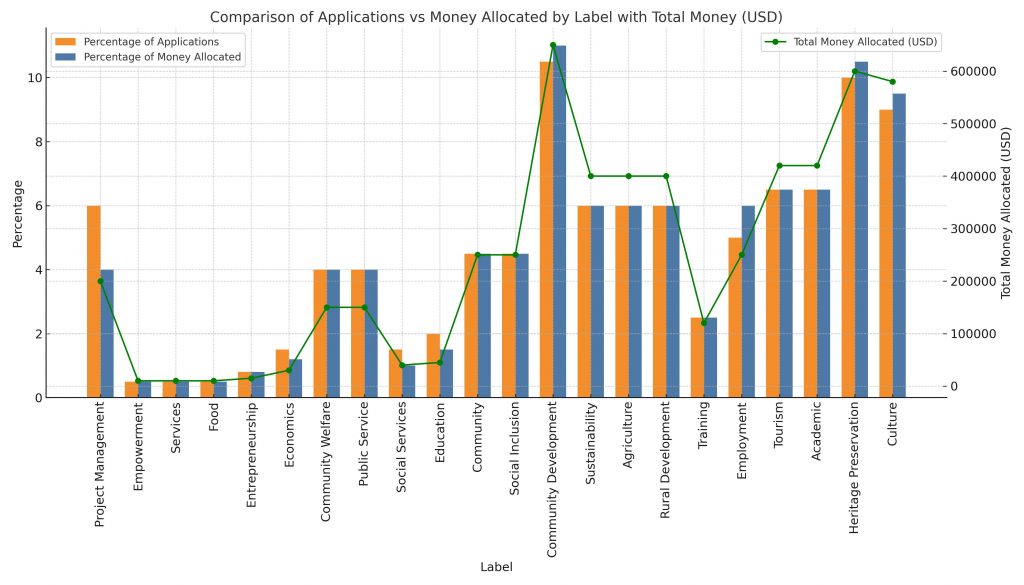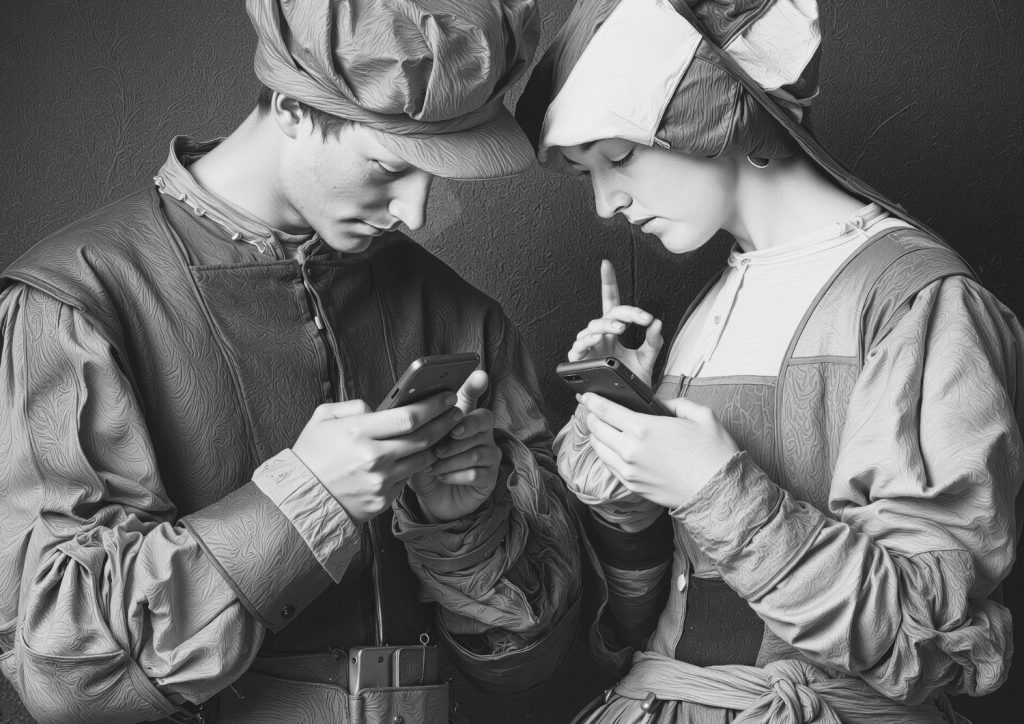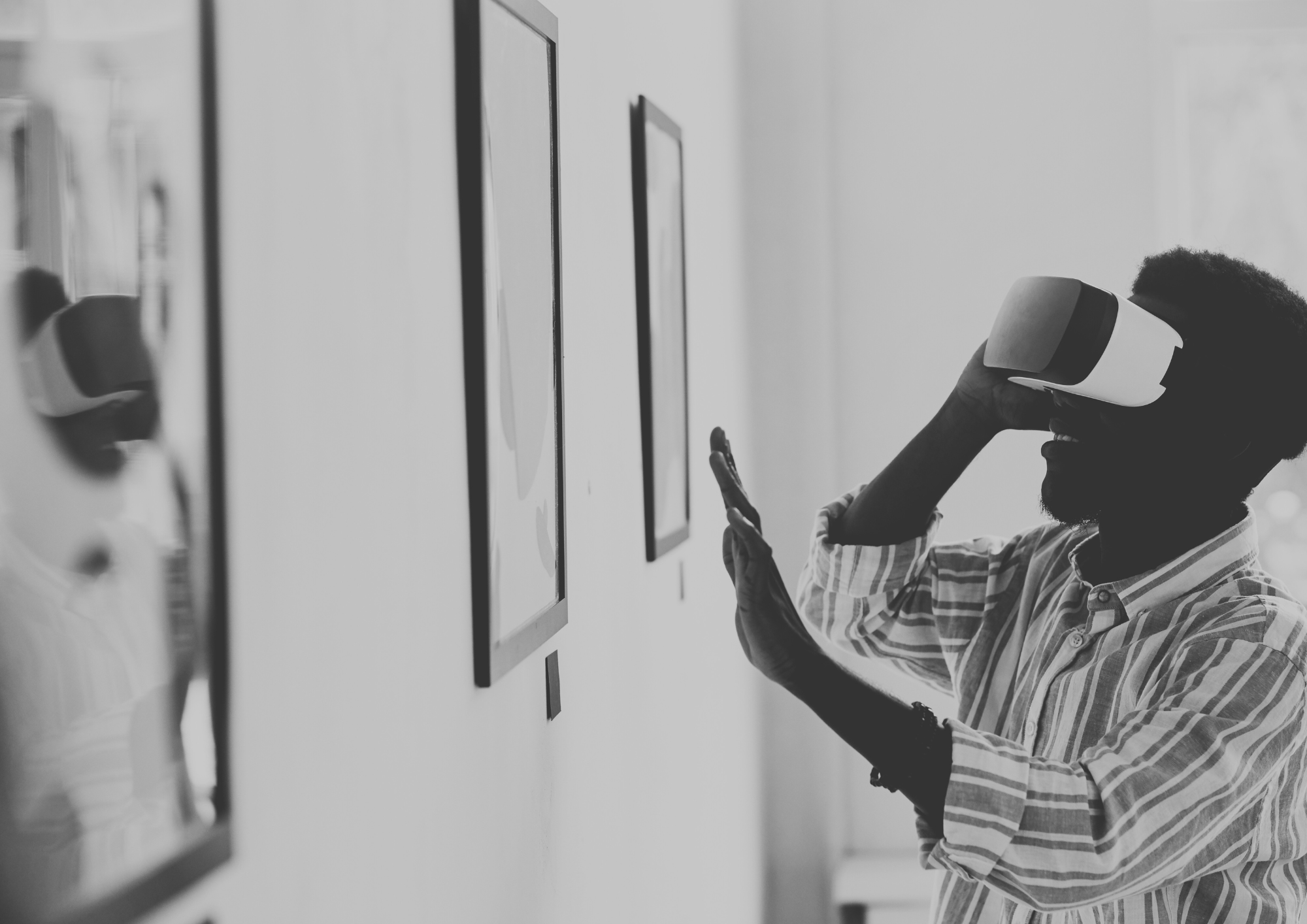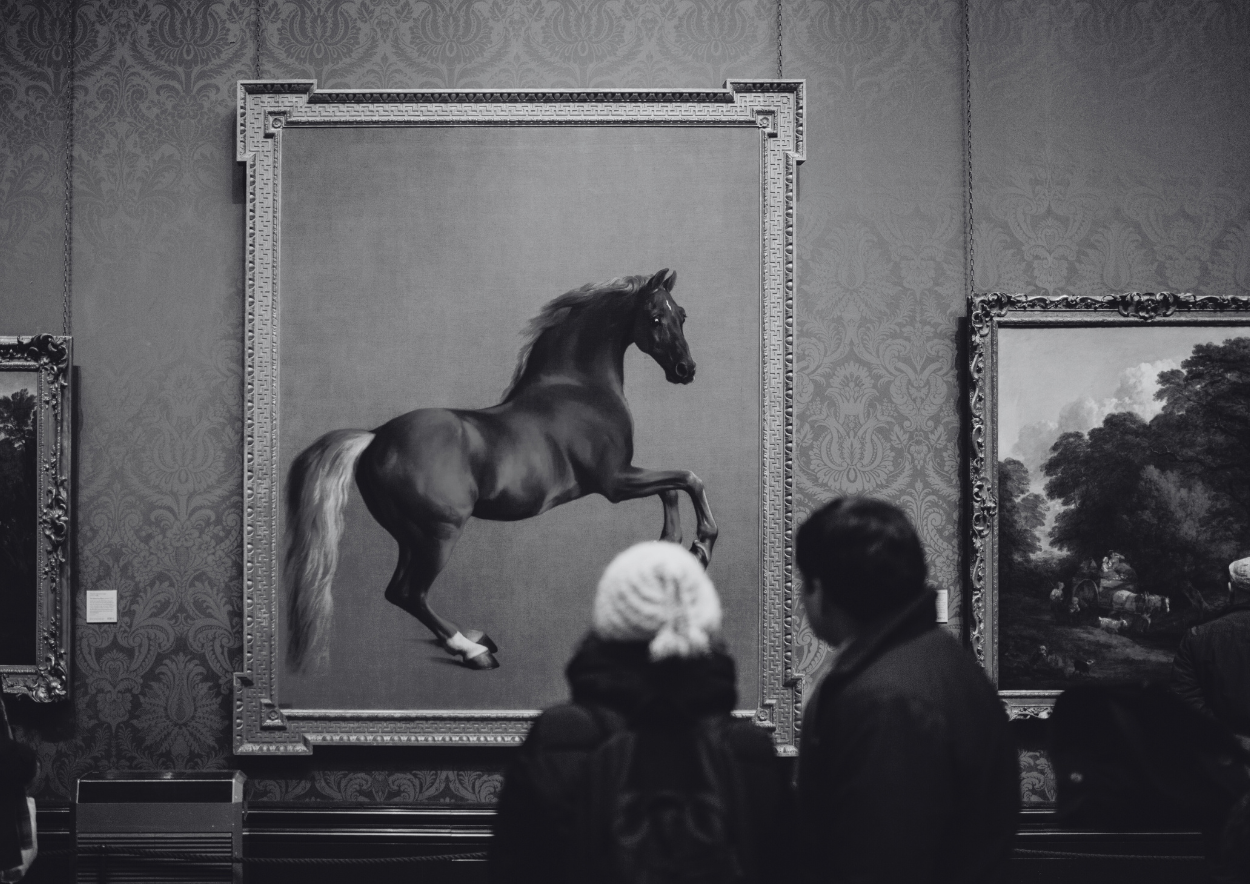Tag Archives: AI
How HERITΛGE is using Generative AI to improve cultural heritage funding
Generative Artificial Intelligence (GenAI) has taken the world by storm — transforming the way we write, design, and make decisions. But at HERITΛGE, we’re exploring how it can achieve something even more meaningful: help us understand, evaluate, and support community-led cultural heritage projects.
In 2023 HERITΛGE launched a call inviting and receiving hundreds of proposals from organizations, communities, and individuals in Africa to apply for small grants for Africa heritage projects — from traditional crafts and oral histories to sustainable tourism and cultural education. This was part of our HerMaP Africa initiative, supported by the Mellon Foundation.
The response was phenomenal. We received an unprecedented number of proposals from around the continent, over 1,700. A committee of experts was set up to examine them and decide which projects would be funded – no easy task!
To ensure that our funding decisions were fair, transparent, and data-driven, following the completion of the committee’s work, we joined forces with researchers from the Technical University of Munich (TUM) and Institute of Computer Science, Foundation for Research and Technology – Hellas (FORTH) – also our partners in the EU-funded SHIFT project, and the Group on Language, Audio, and Music (GLAM), at Imperial College London. Together, we set out to answer a simple but powerful question:
Can open, ethical AI help us make smarter and more equitable funding decisions?
The researchers, including HERITΛGE director, Dr. Evangelos Kyriakidis,introduced a framework that developed a new framework to analyze large collections of project proposals in the cultural heritage field — using a mix of established methods and the latest artificial intelligence (AI).
Our goal was to understand what themes and priorities appeared most often in proposals, and what factors might influenced their success.
To do this, we combined traditional topic modeling tools (which find recurring themes in texts) with large language models (LLMs) — the same kind of advanced AI behind tools like ChatGPT.
First, the traditional models identified broad topics across more than 1,700 project proposals focused on protecting and promoting heritage in Africa. Then, newer AI models refined these themes, helping us define them more precisely and in ways that make sense for the heritage field.
We also looked at how language was used in the proposals — for example, how complex the writing was, what tone it used (positive or negative), and whether certain patterns in language might influence how proposals are received.
This approach helped uncover hidden insights about how funding is distributed and what kinds of projects tend to succeed. Ultimately, the aim is to support more transparent and equitable funding decisions and to help cultural heritage organizations better tailor their proposals for impact.
Putting Ethics and Privacy First
While many people are familiar with AI tools like ChatGPT, these are proprietary systems that store data on external servers. When dealing with sensitive information such as grant proposals, that’s a serious concern.
Instead of sending data to the cloud, we used an open-source AI model (LLaMA3) and ran it entirely on our own secure systems. This ensured that all proposal data remained private and compliant with our ethical standards.
Finding Meaning in 1,700 Proposals
Our analysis identified 25 meaningful categories reflecting heritage priorities and emerging trends in real work on the ground in Africa— from agricultural heritage to sustainable crafts and inclusive education.
 What we learnt was that Community Development, Heritage Preservation, and Culture emerged as the most common and well-funded themes. The figure below depicts how over $1 million of total allocations was apportioned among the 25 refined topics. Three leading categories—Community Development, Heritage Preservation, and Culture—each received close to $600,000. Meanwhile, areas like Social Services and Education fell below $50,000, indicating potential gaps in support.
What we learnt was that Community Development, Heritage Preservation, and Culture emerged as the most common and well-funded themes. The figure below depicts how over $1 million of total allocations was apportioned among the 25 refined topics. Three leading categories—Community Development, Heritage Preservation, and Culture—each received close to $600,000. Meanwhile, areas like Social Services and Education fell below $50,000, indicating potential gaps in support.
Interestingly, Tourism and Academic work secured comparatively large allocations despite a smaller share of total applications, highlighting a more targeted focus in these areas. Keep in mind here that applicants had to demonstrate that their project has a lasting impact, develops capacity, builds networks, strengthens local skills, and has a strong, measurable impact for the protection of heritage and the benefit of local people.
Some topics tended to appear together. Our analysis showed that strong overlaps emerged among Community Development, Culture, and Heritage Preservation, implying that community-driven initiatives often intersect with preserving local culture. Similarly, Sustainability, Conservation, and Agriculture frequently clustered, reflecting an expanding emphasis on environmentally responsible heritage initiatives. By contrast, topics like Training, Business, and Economics tended to appear in isolation—suggesting room for more integrated, cross-cutting proposals (e.g. heritage based social enterprises).
We also used sentiment analysis, readability measures, and inclusivity keywords to study the “linguistic fingerprint” of each proposal: we found that sentiment, readabilitty and inclusivity all mattered. Accepted proposals scored higher in positivity, suggesting that evaluators respond well to an upbeat, confident tone. Both successful and unsuccessful proposals were typically quite technical, indicating that complexity alone isn’t a deal-breaker. However, a moderate level of clarity—i.e., avoiding overly dense jargon—tended to correlate with better outcomes. Terms like “diversity” and “accessibility,” as well as a moderate usage of gendered pronouns, appeared more frequently in awarded projects. This underscores the value placed on inclusivity and social impact within cultural heritage funding.
In plain terms, AI confirmed that trojects using positive and inclusive language tended to perform better with evaluators, showing that tone and clarity influence evaluation outcomes. These insights can guide future applicants toward stronger, more effective proposals.
Why It Matters
By uncovering patterns in both what applicants propose and how they articulate their projects, we can provide clearer guidance for future calls and better ensure that funding reaches impactful cultural heritage initiatives.
This study shows that AI, when used ethically, can help cultural heritage professionals make funding processes more transparent, efficient, and fair. It’s not about replacing human judgment but enhancing it with better data and insights — ensuring that resources reach the initiatives with the greatest impact.
HERITΛGE and its partners will continue refining this approach as a new call for proposals for heritage projects in Mexico will soon be published, under our recently launched HerMaP Mexico initiative.
You can find the study and more information on the TUM website.
Embracing Technology in Cultural Heritage: Overcoming Barriers to Engagement and Accessibility
By Maria Kagkelidou
As cultural heritage institutions around the world grapple with the task of preserving our past, an exciting opportunity is emerging: technology. From virtual reality (VR) tours and augmented reality (AR) displays to artificial intelligence (AI) and haptic feedback, the tools available to make heritage more engaging and accessible are growing at a rapid pace. At the heart of this shift lies the potential to not only enhance visitor experiences but also address longstanding challenges such as accessibility and audience engagement.
As a participant in the SHIFT project, I’ve had the privilege of analyzing key survey results from both cultural heritage professionals and the general public. These surveys highlight the promise of new technologies, but they also underline the barriers that remain—barriers that need to be tackled to truly realize the potential of technology in the cultural sector.
The Promise of Digital Technologies
The results from our SHIFT survey of cultural heritage professionals reveal that many institutions are embracing technologies like AI, VR, and AR to increase their appeal and accessibility. With these tools, institutions are transforming the traditional museum visit into a dynamic, interactive experience. Visitors can now walk through virtual reconstructions of ancient civilizations, experience interactive 3D models of priceless artifacts, or participate in immersive educational games.
The general public survey, also part of the SHIFT initiative, further confirms this shift. When asked what would make them more likely to visit museums and cultural sites, a significant majority of younger respondents (aged 18–34) said that interactive, technology-driven experiences such as VR or AR would encourage them to engage more with cultural heritage. These technologies can bridge the gap between a traditional, static experience and a more dynamic, immersive one that speaks to today’s digital-native generations.
For institutions, the opportunity to create more inclusive spaces is equally promising. Through AI-powered accessibility tools such as text-to-speech for visually impaired visitors or haptic technologies that allow users to “feel” digital representations of artifacts, museums are making their collections available to broader audiences. These technologies, which were once considered futuristic, are now seen as essential for enhancing the inclusivity of cultural institutions.
Barriers to Widespread Adoption
Despite the optimism around digital transformation, the SHIFT surveys also shed light on the significant barriers preventing more widespread use of technology within cultural heritage institutions. Budget constraints were the most frequently cited challenge, with 57% of respondents reporting that limited financial resources were a key obstacle to adopting new technologies. Initial costs, as well as the need for ongoing maintenance and infrastructure upgrades, are particularly burdensome for smaller institutions.
In addition to financial concerns, lack of technical expertise remains a crucial barrier. Many institutions report that they simply do not have the in-house capabilities to implement or maintain advanced digital tools. This challenge is especially evident in smaller, less resourced institutions, which often do not have dedicated IT departments or staff with specialized training in digital tools.
There is also a degree of institutional inertia. The cultural sector can be slow to change, with some professionals expressing concern that technology might undermine the authenticity of cultural experiences. The survey results showed that about 33% of respondents felt that the introduction of advanced technologies might detract from the physical connection to artifacts or undermine the traditional, “hands-on” museum experience that many visitors still value.
Opportunities for Change
Despite these barriers, the SHIFT project continues to push forward with the belief that technology can be an enabler, not a disruptor, of cultural heritage. To address these challenges, the survey results suggest that there are several actions we can take to help institutions embrace digital transformation more effectively:
- Increased Funding Support: Public and private funding needs to be expanded, especially for smaller institutions. This can include targeted subsidies or shared funding models to make technology adoption more affordable.
- Training and Capacity Building: Cultural heritage professionals must be equipped with the technical skills to successfully implement and use these technologies. The SHIFT project has already initiated training programs aimed at increasing digital literacy within the sector.
- Collaborative Efforts: Cross-institutional collaboration should be encouraged to share resources, knowledge, and digital tools. This can be particularly helpful for smaller institutions that may lack the financial or technical means to go it alone.
- Inclusive Design: As the SHIFT surveys showed, the desire for inclusive experiences is high, and digital tools are uniquely positioned to meet the needs of diverse audiences. Institutions must continue to prioritize accessibility—from providing virtual tours for those unable to travel to offering multisensory experiences for people with disabilities.
A Bright Future for Cultural Heritage
The SHIFT project is driven by the ambition to make cultural heritage more accessible, inclusive, and engaging for all. The survey findings clearly show that while the appetite for technology is strong, the sector must work together to break down the barriers preventing its wider adoption. Through collaboration, investment, and training, the cultural heritage sector can harness the power of technology to create richer, more inclusive experiences that will attract new audiences and better preserve our shared history for generations to come.
The road ahead may be challenging, but the potential is undeniable. As institutions continue to embrace digital transformation, the future of cultural heritage looks not just more interactive and inclusive, but more dynamic and engaging than ever before.
SHIFT Project forges ahead to make heritage accessible through technology
HERTΛGE attends SHIFT Consortium meeting: consulting stakeholders and reviewing use cases to make cultural heritage more accessible and inclusive through technology.
The SHIFT Consortium held its second in-person meeting earlier this month in Knjaževac, Serbia. HERITΛGE and twelve consortium partners were hosted on 15th – 16th June by the Homeland Museum of Knjaževac, part of the Balkan Museum Network.
¨We had a great opportunity to take stock of all the progress that has already been made for the creation of tools that will help make cultural heritage more accessible and inclusive,” said Razvan Purcarea, from project coordinating partner SIMAVI.
SHIFT is funded by the European Commission’s Horizon Europe program. It brings together 13 leading research and industrial organisations and SMEs with a common vision: to strengthen the impact of cultural heritage assets. SHIFT will produce an array of tools taking advantage of the latest developments in fields such as Artificial Intelligence (AI), Machine Learning (ML), Haptics, and Auditory Synthesizers to increase the appeal of historical artefacts, improving their accessibility and usability for everyone through better content representation, enriched user experiences, inclusive design, training, and more engaging business models.
During the Knjaževac consortium meeting, partners had the opportunity to review use-case scenarios and functional requirements, engage with external stakeholders, and attend the opening of the Homeland Museum’s latest exhibition.





